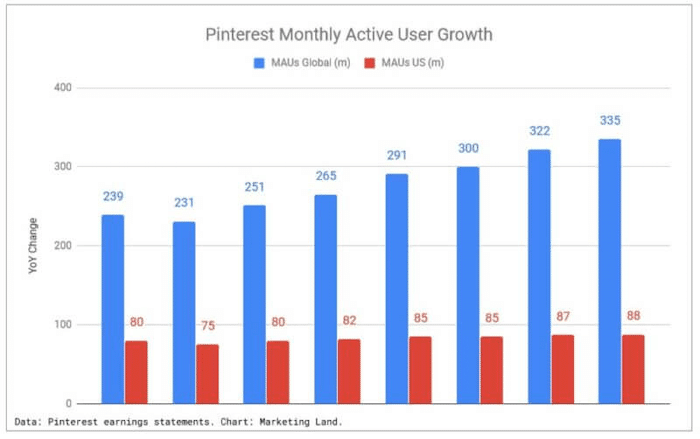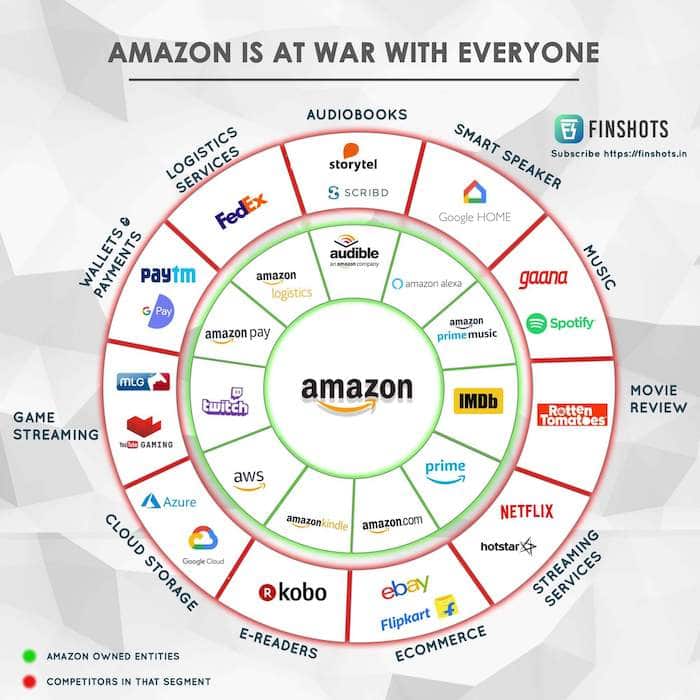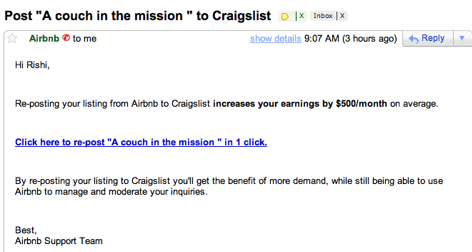Growing pains are inevitable for most small businesses. At some point in your journey, your business will outgrow its former self.
And pretty soon, you will face some very confusing forks in the road, like, whether to:
- Grow your team and hire more, or stay small and nimble
- Raise capital or stay self-funded
- Stay in your niche or expand to new market horizons
- Acquire other startups—or be acquired
When you’re faced with such a dilemma, don’t ignore your scaling opportunities—and definitely don’t let the mounting pressure of success crush your business.
Luckily, the problem of scaling up is always a “growth problem.” It’s an opportunity for you to channel your challenges in the right direction and to expand your business’s impact.
In this post, we will show you how exactly you should scale your business—especially if you’re a tech-based startup.
In the sections below, we’ll look at the following topics:
- What should tech startups consider before scaling?
- 4 tips for scaling a tech startup
- 3 examples of tech startups that have scaled successfully
There are tons of blog posts written on the topic of how to scale your business, but most of them just leave you with vague tips—seasoned generously with entrepreneurial platitudes.
We’ll go a step further and illustrate these tips with examples from well-known tech startups that’ve scaled to new heights by taking certain bold steps.
Let’s begin by discussing a few nuances that are specific to tech-based startups.
🤝 Is your tech startup’s team collaborating as effectively as it could be? What should you look out for before you start scaling in earnest?
What should tech startups consider before scaling?
To start with, it’s important to differentiate between growth and scaling.
Although they can be used interchangeably, there is a small difference.
Growth is when your business revenue is proportional to adding new resources to your business—such as assets, technology, manpower, product features. Imagine a business that doubles its contact center staffing to match the growing demand for its product.
Scaling is a form of growth—but without the extra frills. Companies “scale” when they grow their revenue exponentially without spending a lot on acquiring more resources—which means they improve profit margins while keeping their costs low. (That’s why startups especially tend to be obsessed with productivity. The goal is to have a higher output, while maintaining a relatively low input.)
Think of a rapidly growing business that—instead of going on a hiring spree—automates a large part of its customer service without raising costs:

Just to clarify, we are not advocating one is better than the other. Growth and scaling are both equally valid pathways based on the end goal for your business.
The decision of whether to just grow or scale becomes easier when you figure out what’s best for your business, your team, and your customers.
For the scope of this post, we will keep our focus on scaling because it’s faster, cheaper, and more ambitious.
As a tech-based startup, there are a few other considerations you should be mindful of before scaling.
For instance, you have to make sure that you’ve found your product-market fit. Product-market fit means developing the right product and selling it to the relevant audience segment (it’s a match made in heaven).
Achieving a product-market fit is initially tough, but knowing when you’ve achieved it is pretty easy. When you find your product-market fit, your customer acquisition costs achieve a record low, and retaining your customers looks easy.
Trying to scale your business without having a product-market fit is a recipe for disaster. Why bother scaling if you haven’t validated your product’s demand first?
The story of Airware—a now-defunct drone startup—is a cautionary tale on why scaling isn’t for everyone.1 (The short version of the story: Even after raising $118 million—from big investors like Andreessen Horowitz, no less—Airware just couldn’t find the right product-market fit for its drones.)
The other consideration is to figure out if you have a predictable source of revenue. Having a steady flow of revenue validates that your business has achieved the product-market fit and that it’s ready to scale.
This is especially true if you’re thinking of attracting investors to fund your company’s growth—a common technique for scaling. The #1 thing that most venture capitalists look for in a company they want to invest in is—how predictable is your sales engine.
Investors are like risk-averse gamblers—they want to bet on startups that can show them the money. They will only invest in your startup if you can show them your company’s financial health, your product’s stability, and the potential to scale.
If your tech startup is still figuring out things, hasn’t found its ideal market yet, or doesn’t have a predictable sales pipeline—then scaling is probably not the best strategy for you right now.
In the next sections, we will discuss examples and explore some more tips in detail on how to scale tech startups.
4 tips for scaling a tech startup
Here are four tips on how to scale a tech startup. (More on these in the company examples below.)
1. Automate, streamline, and outsource
Scaling up means getting rid of the excess baggage that holds you down. Think of all the manual processes that made sense when you were a 10-member team, the approval cycle that takes four days to complete, or the communication overload that slows down your already-bogged-down team.
They all need to get booted if you’re serious about scaling.
So what’s the answer? You can either automate, streamline, or outsource the redundancies to improve your operational efficiency. In other words, identify the best tools for you to scale without disrupting your startup’s growth.
For example, one of the easiest things you can do is to streamline the tools you’re using. Are you using one tool for video conferencing, another for file sharing, another for team messaging, and so on? Instead of paying for many disparate tools, why not save money and your team’s valuable time by using fewer tools that are more versatile?
The RingCentral desktop and mobile app, for instance, gives you messaging, video call, and phone (and more)—all in one place:
There are loads of other possibilities. Whether it’s your customer service software or cold calling software, always look for opportunities to reduce the technology bulk that your team is using. Time is your most precious resource. Do you want to spend it on low-value tasks like learning and managing a bunch of different tools, or do you want to spend it on valuable activities that directly translate to growth?
Learn more about how tech startups are using RingCentral features such as business phone service, virtual call center, omnichannel contact center and CCaaS to collaborate more effectively with distributed teams and keep customers happy.
2. Make customer retention your top priority
Acquiring more customers is a no-brainer when you’re just starting up, but retention is where your focus should be when you’re scaling up.
Customer retention makes sense because it keeps your acquisition costs low while boosting profit. Retention also builds customer loyalty and helps you build a predictable revenue engine.
If you’re a startup in the subscription-based SaaS (software as a service) industry, for example, improving your subscription renewal will help you compound your growth.
But how do you improve customer retention? When you’re growing as a company, you need to keep tabs on what people say about your brand or when customers need support from you. But how can you keep track of all the conversations happening across all those different social media channels?
Take RingCentral Engage Digital™ for instance.
RingCentral Engage Digital helps you cut your support overhead by helping your customer service team manage customer interactions across all digital channels through a single interface. Here’s a quick look at how it works:
Check out how companies like Orange and Ooredoo are using the RingCentral Engage Digital platform to manage their digital customer service at scale.
It’s easier said than done, but you have to start by prioritizing great customer support, emphasizing team relationships, offering customers a reason to return, and keeping your ears to the ground. And once your customer retention improves, it’ll help you fight churn, improve your brand advocacy, lower your support costs—and scale to your highest potential.
🕹️ Get a hands-on look at how RingCentral can work for your startup by booking a product tour:
3. Raise capital
Startups love the sound of money—especially if it helps them move up and grow fast.
Raising funds is a quick way to attract the best talent, diversify your product’s strengths, boost your marketing and sales, and leave a bigger footprint in the world.
There are several ways to raise funds for your startup—raising seed capital from friends and family members, asking angel investors to invest in your company, or taking bank or credit card loans to fund your growth.
Just be sure that you do your homework before seeking funds for your startup. Ask yourself how much capital you want to raise, what will you do after raising the required funds, and if you’re okay letting go of the control you might have on your startup when you invite investors to own a part of your business.
4. Hire—and fire—judiciously
A common myth in the tech startup circles is that you need to hire slowly and fire quickly when you are scaling.2
We suggest you brush off such advice because it’s a half-baked, dismissive, and downright dangerous idea to believe in.3
Scaling also means employing more people, building a favorable perception of your brand, and building a company that boosts the economy. You can’t hit those goals if you were to fire your employees just because some Silicon Valley gurus said so.
Instead—be more judicious with your hiring, people management, and firing as much as possible. Hire the best people so that you don’t have to fire them later.
Don’t hire talents with an intention to fire later. Remember that your goal is to keep costs low while increasing profit—which means the margin for error is very minimal.
3 examples of tech startups that have scaled successfully
The examples below showcase the out-of-the-box creativity that you need to apply in your business when scaling a tech startup.
1. Pinterest
When Pinterest launched in March 2010 as a one-of-its-kind image-sharing website, very few people were interested in what the platform had to offer.
But Pinterest grew from getting zero to a billion page views in just two years thanks to the brilliant marketing it applied in growing its product. Here’s how they pulled it off.
In their early days, Pinterest founders marketed their website as an invite-only platform and hosted local meetups. This gave them a chance to understand their ideal customer persona (ICP) better—artistically inclined people like handicraft makers, bakers, and crocheters who wanted to express themselves through an online visual platform.
In addition to its already existing marketing team, Pinterest set up a new “growth team” with a super-specific objective to increase the number of monthly active users (MAUs).
As their word-of-mouth marketing grew, the company applied some clever growth hacking techniques to open the platform for new market segments like part-time hobbyists, social media users, and brand marketers.
The company rolled out a new feature to allow users to sign in through their Facebook account—a brilliant move at the time because, in 2010, Facebook had hundreds of million more active users than Pinterest did.4
This worked as a low-cost, but very powerful marketing channel for Pinterest to scale its user base. Whenever people logged in to Pinterest through their Facebook account, they would see a bunch of connections from Facebook already on the platform.
It reinforced their liking for the platform and gave them reasons to explore the platform further—increasing user engagement and product adoption.
This technique got Pinterest massive traction—like attracting 40,000 unique visitors to their website in August 2010—which was significant for them at the time.
Pinterest also made it easy for users to share their “Pins” and “boards” to their network of friends on Facebook, which incentivized other Facebook users to try Pinterest.
On the team front, Pinterest made a strategic decision for its growth team to report to the product team instead of the marketing team. This helped them cut a lot of redundancies in their internal process, align their goals better, and execute faster.5
In 2012, Pinterest cashed on its rising company valuation to raise multiple rounds of funding—$100-million Series C at a $1.5 billion valuation, $225 million Series E at a $3.8 billion valuation, and $553 million Series G at an $11 billion valuation:
Owing to its rapid growth and popularity, Pinterest opened its initial public offering (IPO) in April 2019 at a $10 billion valuation—raking millions of dollars for its founders, key stakeholders, and many of the early employees.
Right now, the company is worth $26.19 billion in market valuation6 and has 335 million monthly active users globally.7
The takeaway: One key to scaling your business is to understand your customers inside out. Pinterest’s interest in getting to know its power users helped them come up with the right product features and leverage the right channels (i.e., Facebook) for growth.
2. Amazon
In 2018, LinkedIn co-founder Reid Hoffman in a book that he co-authored coined the term blitzscaling for companies that scale up “at a dizzying pace that blows competitors out of the water.”
And if there’s one company that fits the perfect definition of blitzscaling, it’s Amazon.
Jeff Bezos quit his full-time job to start Amazon in 1994 after he read a report that predicted the internet will grow by 2,300% every year.8
From those humble days of being an online bookstore startup, Amazon has continuously leveraged its “flywheel effect” to chart its course as a mega “scaleup.”7
From its early days, Amazon also took a unique spin in developing its product. Instead of building a product or a feature first and finding the right customers for it later, the product development teams at Amazon worked backward to identify the customer problems first and then develop a product or feature to solve them.
This is the reason why Amazon has found success with its products like the Kindle e-reader, Amazon Alexa, and Amazon Web Services (AWS).
Amazon’s hiring masterstroke was to retain the C suite talents from companies that it acquired. For example, Bezos kept Mike George when Amazon acquired George’s former employer Junglee in 1998. Since then, George has gone on to lead Amazon’s Marketplace, Echo, Alexa, and Appstore and is one of Bezos’ closest advisors.
Amazon—named after the vast South American jungle—is the best example of a scale-up company that wants to grow in all possible directions.
Here’s what Amazon’s aggressive scaling and expansion strategy looks like across industries:
Today, the company towers at a $1 trillion valuation,9 has the world’s second-best paid membership program (after Netflix),10 and employs more than 935,000 people worldwide.11
The takeaway: Scaling is a continuous process with no end in sight—and a large part of it depends on the quality of hires you bring in to help your company grow.
Amazon is still growing strong, mostly thanks to the standard of people it hires to fuel its growth.
3. Airbnb
Airbnb started out in 2007 in San Francisco as a ripoff of Craigslist—America’s favorite classified ads website.
Over the years, Airbnb scaled from being a three-member bed-and-breakfast booking website to become the world’s largest vacation rental marketplace because it danced to a different tune of business growth.
Like Pinterest’s founders, Airbnb founders went door to door during their initial years to meet local house owners and convinced them to rent their houses as Airbnb hosts.
This not only gave them an opportunity to identify their target market better but also gained insights on how to improve their product experience for prospective customers.
This might sound like a counterintuitive exercise to scaling, but most tech startup geniuses like Reid Hoffman12 and Paul Graham13 agree that doing things that don’t scale during your initial startup years sets the stage for scaling your business to greater heights.
Airbnb knew that they were a more polished version of Craigslist with the exact same user persona, but they didn’t have as massive a user base as the latter.
So instead of trying to come up with a unique selling proposition (USP) to beat the incumbent—which would have been a painfully slow and difficult attempt—Airbnb offered its users an opportunity to repost their property ads on Craigslist as well, pitching them the lure of earning more.
How did the company do this? They built a bot to crawl Craigslist’s bed-and-breakfast subdomains, copy the ad listings’ URLs, input the listing information, and forwarded the URLs to the respective users for publishing.
Here’s an example of the email Airbnb sent to its users to coax them to use Craigslist:
Once new customers discovered Airbnb via Craigslist, they fell in love with the aesthetically pleasing property photos, personalized product experience, attractive rates—all of which made them come back to Airbnb for their next vacation booking.
This technique boosted Airbnb’s user acquisition by thousands and scaled its user base quickly at almost no significant cost.
But what goes around, usually comes around. Airbnb was so heavily focused on its US market that in 2011, the company got a taste of its own medicine when they faced business threats from a European company that was cloning their business.
The threat was real since the copycat company had recently received a $90 million in funding and grew to 400 employees in just two months.14
Airbnb quickly moved to action and bought top-level website domains for nine countries in Europe, set up a global translation team, and revamped its website’s payment page to accept international payments.
They also bought two smaller companies that operated in the same domain in Germany and the UK.
In just over three months, Airbnb launched its international service with fully translated website pages and employed public relations tactics to gain press coverage.
Airbnb’s quick-thinking strategy to fight the competition as soon as they appeared helped the company scale its international operations and gain over 227,093 listings in 14 cities by 2016—with over 65,000 bookings in top European destinations like Paris.14
The takeaway: There’s so much to pick from Airbnb’s scaling-up story. First, do things that don’t scale to understand your user base better.
Second, don’t be shy to ride on the coattails of your competition if it doesn’t breach business ethics or if it’s a smart and quick way to grow your business.
And lastly, when you face competition—move faster than your rivals to assert your market dominance.
To scale a tech startup, sometimes you have to break the mold
Most tech startups scale when they start gaining good traction for their products. This is the key to knowing when you should scale—when your existing processes start feeling small, when your customers expect more from you, and when you discover new potentials on the horizon.
Scaling a tech startup is all about shedding your old, tight-fitting processes to find more suitable avenues for your growth.
Apply the tips mentioned above to successfully scale your tech startup when you realize that you can no longer ignore the growth opportunities in front of you.
1techcrunch.com/2018/09/14/airware-shuts-down
2inc.com/bubba-page/5-reasons-to-hire-slow-and-5-reasons-to-fire-fast.html
3fastcompany.com/40461294/this-is-why-slow-to-hire-and-quick-to-fire-is-bad-advice
4growthdevil.com/pinterest-get-so-big
5medium.com/@sarahtavel/five-lessons-from-scaling-pinterest-6a699a889b08
6macrotrends.net/stocks/charts/PINS/pinterest/market-cap
7investor.pinterestinc.com/press-releases/press-releases-details/2020/Pinterest-Announces-Fourth-Quarter-and-Full-Year-2019-Results/default.aspx
8inc.com/darren-marble/jeff-bezos-quit-his-job-at-30-to-launch-amazon-heres-how-to-know-if-its-right-time-for-your-big-move.html
9markets.businessinsider.com/news/stocks/amazon-4q-earnings-stock-price-jumps-valuation-tops-trillion-beat-2020-1-1028863496#
10bloomberg.com/graphics/2019-amazon-reach-across-markets/
11geekwire.com/2020/amazon-tops-935k-employees-week-pandemic-driven-hiring-spree-continues/
12medium.com/@reidhoffman/how-to-scale-a-magical-experience-4-lessons-from-airbnbs-brian-chesky-eca0a182f3e3
13paulgraham.com/ds.html
14medium.com/@jgolden/lessons-learned-scaling-airbnb-100x-b862364fb3a7
15businesstravel.fr/images/pdf/etude-airbnb2016coyle.pdf
Updated Jun 27, 2025
















